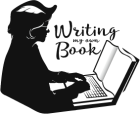A complete media kit is essential. It’s your primary marketing tool.
Here are the typical components.
- An author bio – Give readers a reason to listen to you—even if you have little experience.
- Book synopsis – Create interest in your book with a professional synopsis.
- Book tip cheat sheet – Hook potential readers and open up media opportunities with a creative tip sheet. This is especially useful for non-fiction topics.
- Contact information sheet – Ensure potential buyers, media personalities, etc. know how to reach you.
- Cover letter to retail or bookstore merchandisers – Use this whenever you want to introduce your book to buyers directly. This is especially useful for opening the doors to small bookstores.
- Hi-resolution digital photos – Open doors by giving people a face they can connect with. While you’re responsible for scheduling a professional photo shoot, we make sure you know exactly what to tell the photographer. You don’t have to be photogenic. You just need a photographer who is committed to helping you look your best.
- Press release – Make it newsworthy, and you could secure free promotional opportunities.
- Sample chapter – Share. That peek could sell the book.
- Sell Sheet – Capture more sales by having a sell sheet.
- Speaker One-Sheet – Consider speaking engagements as a way to promote your book. A speaker one-sheet makes it easier for event planners to choose you as a speaker.
Authors are too close to their books and themselves. Thus, they usually find it difficult to prepare an effective media kit.
Our media services include writing and design. They do not include photography or writing the sample chapter. This comes from your book.
Importance of Professional Photography for Author’s Media Kits
We provide the specifications so your media kit will contain the correct sizes of hi-resolution digital photos. We encourage you to work with a professional photographer instead of taking pictures with your smart phone. It is worth the investment.
 For example, here is a photo I captured using a cell phone. The facial expression is good and genuinely captures the author’s personality. However, there are some serious issues.
For example, here is a photo I captured using a cell phone. The facial expression is good and genuinely captures the author’s personality. However, there are some serious issues.
Notice how there is no depth to the photograph. Also, the complexion is too red.
I tried to use Photoshop to fix the complexion. As you can see, the results weren’t anywhere as effective as the results a professional photographer is able to achieve through proper lighting.
 Here is a photograph of the same author taken by professional Kate Singh in her studio.
Here is a photograph of the same author taken by professional Kate Singh in her studio.
Deborah asked Kate to photograph her against a white background to make it easier for me to use the photograph creatively within the media kit and other marketing materials. (White is easier to remove from the background.)
The need to use Photoshop was minimal. All Kate did was remove a few stray hairs on Deborah’s right cheek.
This photograph projects the Deborah I know—a warm and bubbly person children are attracted to! Notice how much brighter Deborah’s complexion is and how much younger she appears. This is without erasing a single wrinkle.
Which person would you be more likely to interview?


You must be logged in to post a comment.